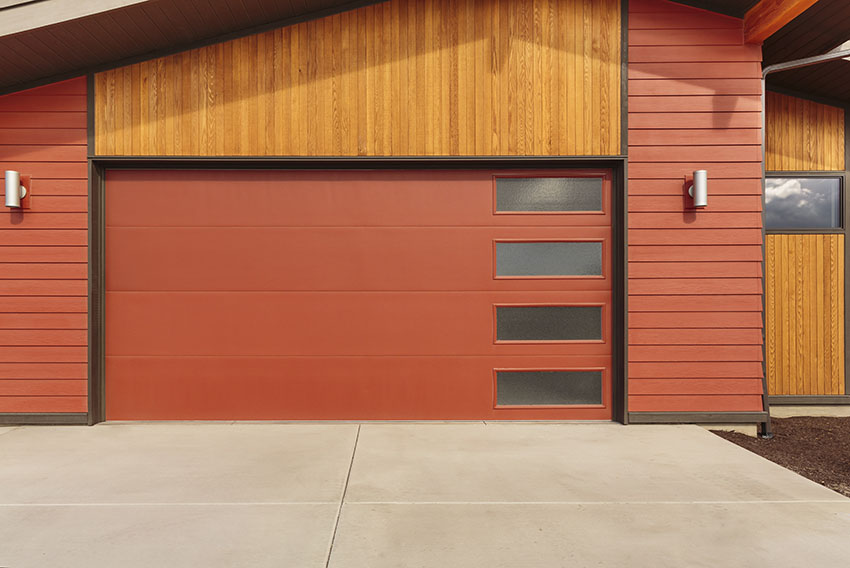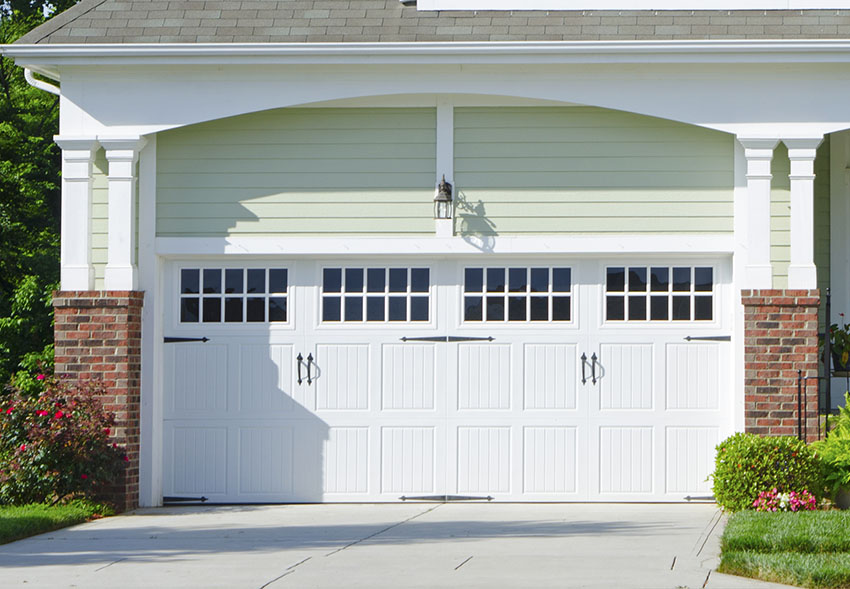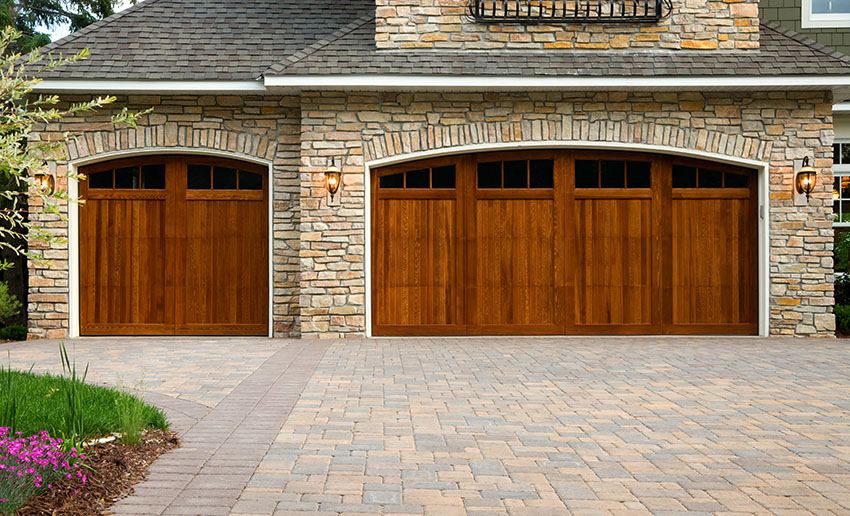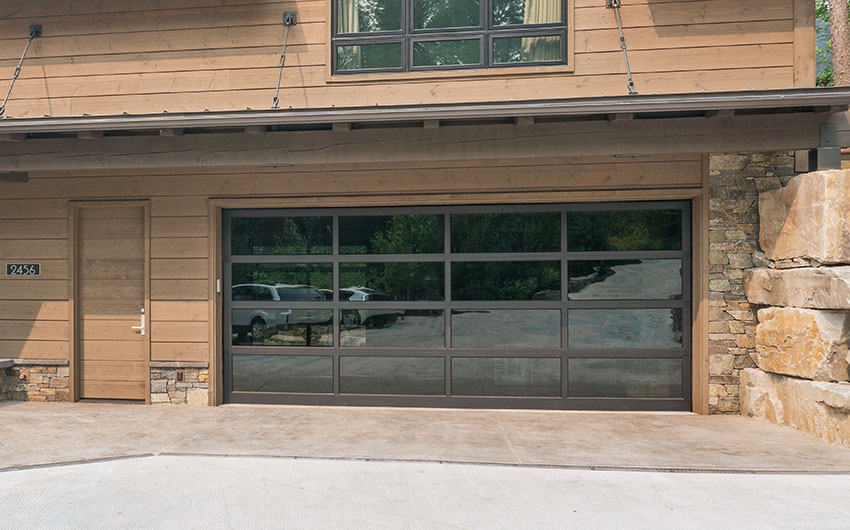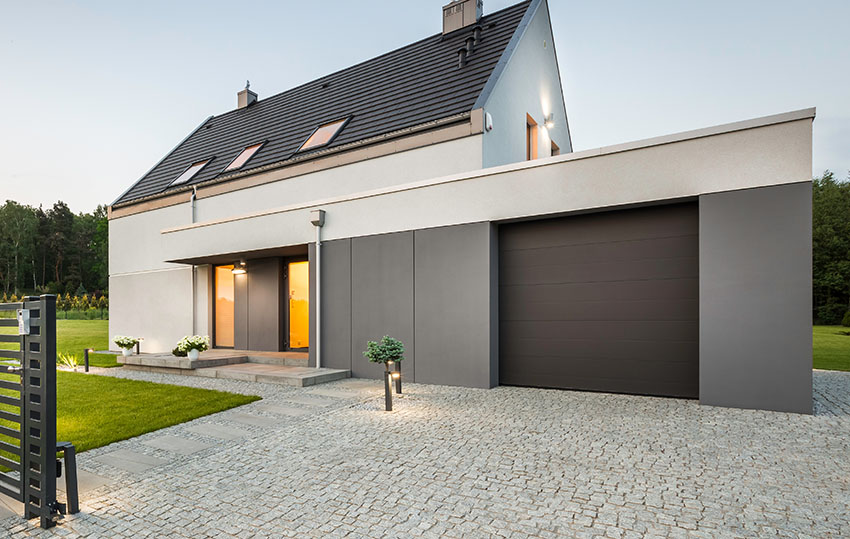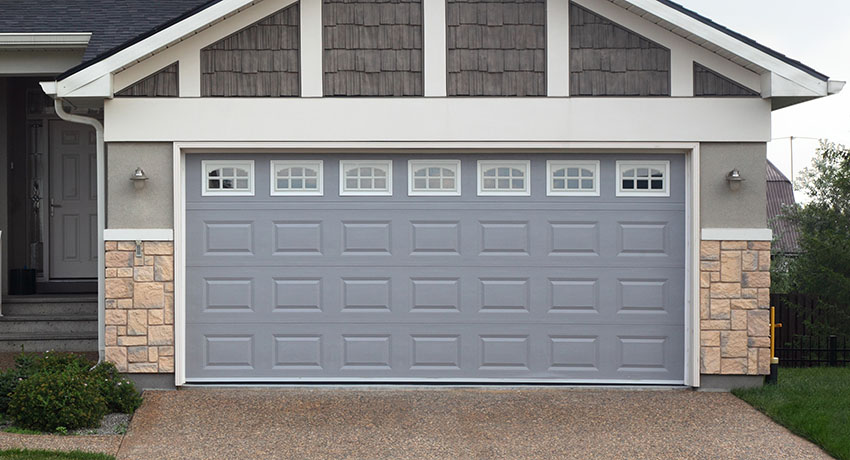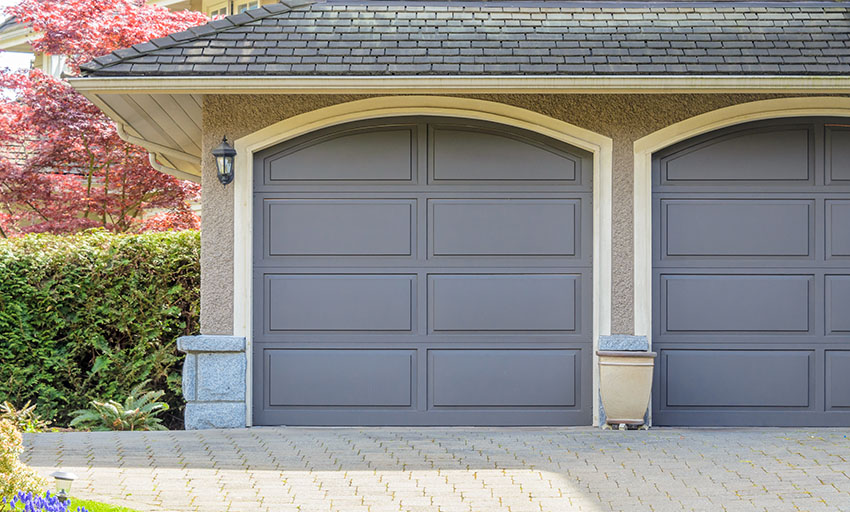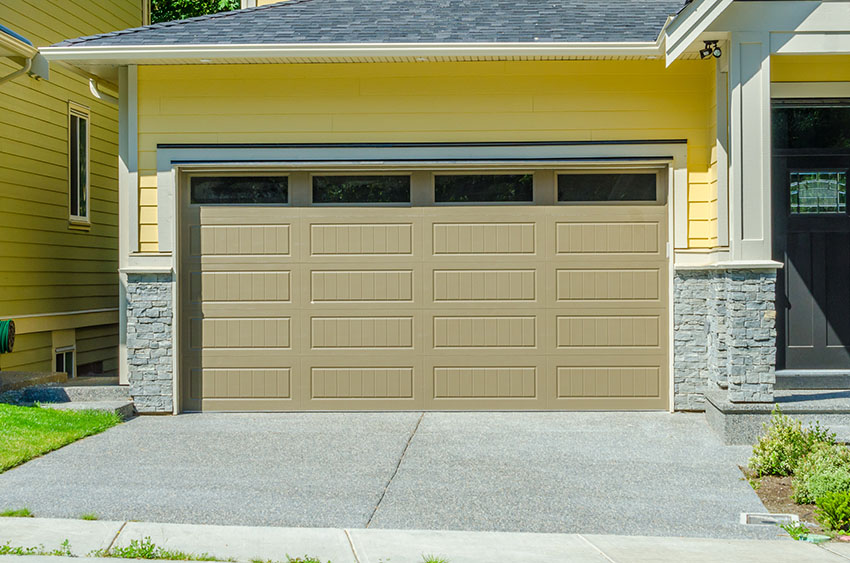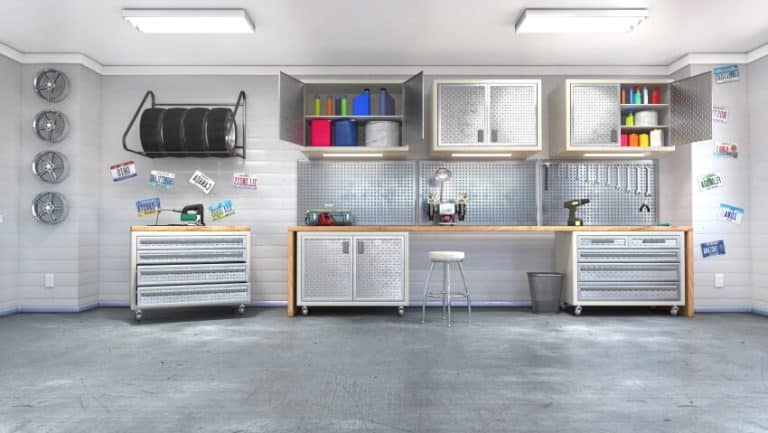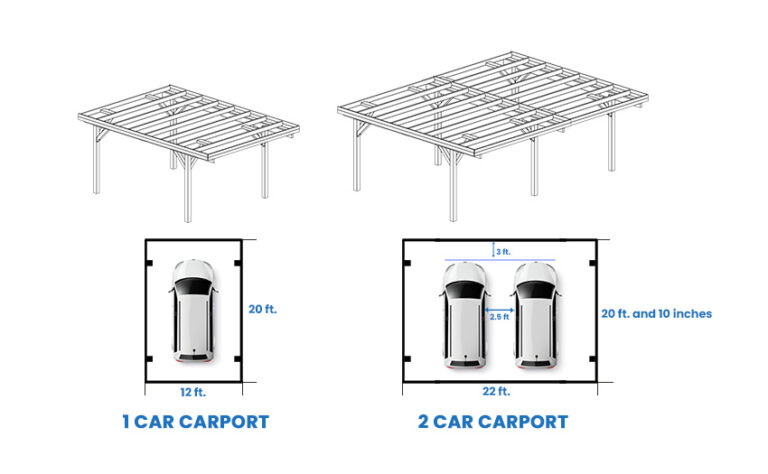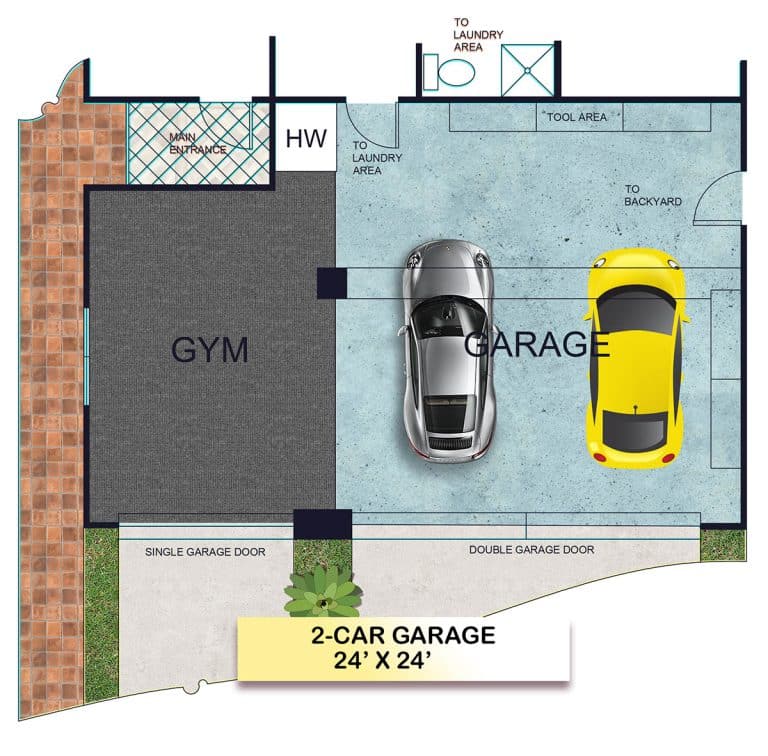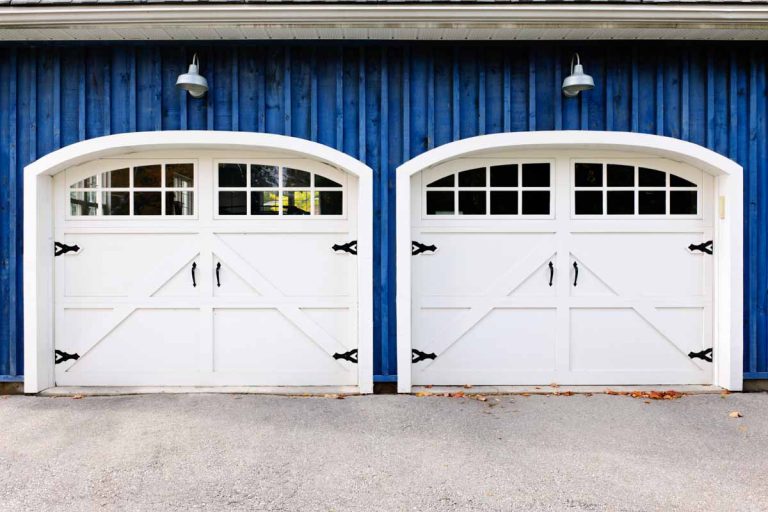What Are the Most Popular Types Of Garage Door Panels?

One critical feature of a functioning garage is a good door. Your garage door needs to keep out the elements and wildlife and provide you with privacy. One important feature of any garage door is its panels, which come in various shapes and sizes and are made of durable and attractive materials. Your panels are the “face” your garage presents to the world, so they need to be beautiful and sturdy. In this post, we will look closer at garage door panels to help you choose between the different types. Additionally, we’ll share essential tips on extending its lifespan by installing and maintaining the correct type of panels.
What Are Garage Door Panels?
As we mentioned, garage door panels are the “face” of your exterior and one of the first things seen upon approaching your home. They are the portions of your garage doors seen from the outside when the doors are closed. Garage door panels are usually square or rectangular sections of materials mounted on a connected frame.
The two most common types are single panel and sectional garage doors. A single panel garage door consists of one big board or solid slab of layered material mounted on a frame. Meanwhile, a sectional design is made up of multiple panels.
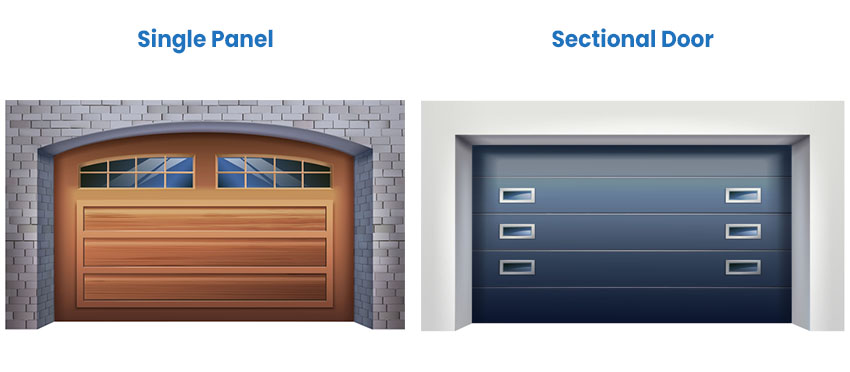
Even well built and well maintained garage door designs are subject to wear and tear. After all, there’s no denying that it sees a lot of use. On average a residential garage will open and close about 1,500 times annually, and that’s a lot of wear and tear.
These doors can get dented and cracked from use, and they can also get damaged from impact. Examples of common “accidents” that can cause damage are backing your car into it or a branch falling and slamming into it due to a strong wind.
With a sectional garage door, minor damage can be fixed by just replacing the damaged panels. If the damage is confined to one or two panels, then you just need to repair or replace those panels. This is a simpler and less costly project than replacing your entire door – which you might have had to do if you had a single-panel design.
With sectional doors, it’s possible to isolate and repair the damaged area. This isn’t possible with a single-panel styles, meaning that damage to one area can render the entire thing unusable or even unsightly.
Panel Replacement
No matter how well-made your garage doors are, you will eventually have to think about panel replacement.
Since your garage door is used often, being opened and closed frequently in all types of weather conditions, there will eventually be some wear and tear. One of the most common signs of wear and rear would be cracked or worn sections.
There are two significant reasons to replace damaged door panels. First of all, it can affect the door’s ability to protect your garage’s interior. Broken or cracked sections could allow drafts, rain, and snow to enter your garage’s interior. This can make your interior damp, possibly causing a mold or mildew infestation.
The state of your panels is also of an aesthetic concern. Broken or discolored panels with visible cracks, dents, or scratches can ruin the overall look of your garage. Because most garages are visible to passersby, a damaged door will be immediately noticeable. If you are thinking of eventually selling your home, it can bring down the property’s curb appeal and overall value.
If a section becomes jammed or damaged, replacing the troublesome panel is much easier and cheaper than the entire door. Depending on the damage and also how much time and effort you have to give to the project, you can either do it yourself or hire someone for panel replacement services.
Replacement Panel Cost
The cost to replace garage door panels will depend on the size and material of the panels. The cost of a replacement project will also depend on the number of panels that need replacing.
For example, a 9-foot panel could cost around $250; a 16-foot panel could cost $700. Multiply that by how many panels need to be replaced. All in all, the average cost to replace garage door panels will range from about $150 to $1,000 if you do the job yourself.
Meanwhile, if you decide to hire a professional to install your replacement panels, you will incur an additional labor cost depending on where you live and the extent of the job. On average, a garage panel replacement project will have an additional labor cost of $200 to $500.
When To Replace Panels?
If your garage door has gaps, visible dents, or scratches, you might want to consider replacing them. When deciding between replacing panels or getting a new door, consider its age. An average garage door should last at least ten years or more before needing to be replaced. So, if you’ve got a door with a few scratched or dented panels, you should just replace or repair those panels and not replace the entire thing.
The extent of the damage is also essential to consider when deciding between replacing the panels or the door. If the damage is minor or only affects one area, just replace the panels in that particular area. If it’s extensive, or you observe that it seems to affect the workings of the door, it could indicate more significant problems, in which case you are better off replacing it all.
Your budget is also a consideration, as it is cheaper to replace a panel or two than your entire door. Replacing a panel as needed is actually a budget-friendly way to maintain your whole structure and ensure that you can extend its lifespan.
Replacing A Single Panel
If just a section of your garage door is damaged, you can consider a single panel replacement. Just remove and replace the damaged panel, and you can improve its appearance and its functionality.
Single panel replacement is usually best for sections damaged in minor accidents, such as if you accidentally backed into the door at low speed and left a noticeable but shallow dent. In the case of minor or surface damage such as this, you can fix the problem by just replacing the single damaged panel.
Replacing Multi Panels
If multiple areas of your doors show signs of wear, you can consider a multi-panel replacement. While this may be a more significant project than a single panel replacement, it is still cheaper and less time-consuming than a complete replacement.
When deciding whether to perform a multi-panel replacement on your door – or replace it entirely, there are two important questions to ask:
- How many panels are damaged?
If it is just one or two panels that are damaged, it is probably cost-effective to just replace those sections. If the number of damaged sections is a little more or close to half the surface area, the cost to just replace the whole door might be cheaper.
Also, if the damage is extensive, there might be more significant problems with the door. If there are other signs of damage, like it getting stuck or making noise when opened or closed, it’s time for a full replacement.
- What is the extent of the damage?
If the damage is normal wear and tear, or you’ve noticed a few panels looking scratched, weathered, or discolored, you should be able just to replace the damaged sections to freshen up the look of your gate.
However, suppose the damage is due to a big accident like a branch hitting the door during a storm and cracking several panels; the damage might be more extensive. In that case, you might want to conduct a thorough examination before just deciding to replace the sections. There could be internal damage to the door’s frame or the opening and closing mechanisms.
If multiple panels are damaged, and the door has started to jam, or you are having difficulty opening or closing it, you might have to replace it.
Color-Matching Panels
Whether replacing single or multiple sections, you need to consider color-matching panels. Color-matching is essential to maintaining the overall look of your garage door. You want the whole design to have a consistent look, so all its sections must be the same color.
The color of the garage door will naturally fade over time due to exposure to the elements. This means that when you buy replacement panels from the store – even if they are supposed to be the same color – when placed side by side, the old sections might be a lighter shade than the new panels.
To combat this, you might need to buy replacement panels in slightly lighter shades than the original sections. Take a photo of your existing panels and try to find the closest match in the store.
You can also consider re-painting the entire door. This is a quick fix to ensure your sections are all the same shade. While painting might add to the cost of the replacement project, it should still be less costly than replacing the entire door.
Types Of Garage Door Panels
Depending on the garage door type, you could have different types of panels. The most common type is what is called a sectional garage door.
Sectional doors are made up of multiple panels connected by hinges. They are often made of steel, though you can also find them made of wood or fiberglass. They can be either manually operated or fitted with an automatic garage door opener.
There are also side sliding sectional doors made of several horizontal panels connected by hinges. These doors open by moving horizontally to the side of your doorway.
Most manufacturers will also provide separate panels that can be used to replace and repair the doors. All you need to do is find the make and model of your particular door. Panels will match the original materials so that they can come in wood, steel, aluminum, vinyl, fiberglass, and wood composites.
Insulation Panels
Insulating your garage ensures that the interior stays cool in the summer and warm in the winter. This protects your car (and other things stored in your garage) from the elements.
Proper insulation of your garage efficiently controls the temperature and keeps energy costs down as you reduce the energy needed to both heat and cool the space. Insulation also reduces the noise from opening and closing the door and muffles outside noises when you are inside.
To keep your garage adequately insulated, you need to either invest in door insulation panels or DIY insulation kits. These insulation panels have an extra layer of insulating material inside or in between the exterior sections. Insulation kits contain insulating material that you can attach to your door, usually employing adhesive.
Insulation panels can come in various materials. Panels with an extra layer of insulation might cost more than those without built-in insulation. Still, their energy-saving properties usually make them a worthwhile investment.
Insulation kits can work with almost any type of garage door panel material, but they are an additional “step” that you need to take when installing. The insulating material in these kits is attached to the door’s side facing your garage’s interior.
Remember, though, that the insulation is visible to those inside your garage – which could ruin the interior look.
Window Panels
Garage door window panels or window inserts are basically glass sections placed strategically to create “windows” on your door. There are several reasons people choose to use window panels. First of all, having window inserts is a unique and fun way of creating a distinctive and attractive garage door, adding some extra appeal to your home’s exterior.
Window panels also allow more natural light in your garage, which can help with visibility. If you’re planning to make your garage a living space, a few window inserts can make your interior a more appealing space to spend your time in.
You can find window panels in various styles and shapes – such as square, rectangular, or arched. If the overall goal is to improve the look of your home’s exterior, be sure to choose window inserts that match your home’s style.
Different types of glass are used in window inserts; you can get window panels that use tinted or colored glass or appear frosted, clear, or even have patterns or designs etched on them. You can even get window inserts that look like glass but are made of more durable material, such as polycarbonate.
You can also get thermal window inserts, which are double-paned and can provide insulation. Thermal windows prevent heat from entering your garage and improve cool air circulation in the room.
Wood Panel Doors
Wood garage door panels are a classic and charming addition to any property and go well with various home architecture styles.
The price of wood doors may vary according to the type of wood used. The most basic type of wood used for these panels is plywood, and it is also the least expensive option.
Other common types of wood used for panels are red or white oak, alder, mahogany, and cedar. Cedar is especially attractive as a garage door material as it’s pest and moisture-resistant. Another advantage to wood is it’s a naturally insulating material, so you might not have to worry about adding insulation.
Solid wood doors can be expensive and challenging to maintain as not all are naturally weatherproof. A good alternative can be wood composite. Wood composite doors are fiberboard sheets covering a wood frame and have cores filled with polystyrene insulation.
The fiberboards can be made to simulate the look and feel of natural wood, but they are less prone to warping and are not attractive to insects such as termites. This makes wood composite garage doors a little more durable than wood.
Glass Panel Doors
Glass panel garage doors are a good choice if you’re going for a modern look for your home. They are usually made of glass and aluminum, with a glass panel mounted in an aluminum frame.
The glass can be either transparent or frosted, or even tinted in various colors. Take note. However, glass panels are more prone to damage and easily crack on impact.
Fiberglass Panels
Fiberglass garage doors are made by bonding two or more layers of fiberglass onto a steel or aluminum frame that is then insulated with polyurethane. It can then be painted in various colors and even be made to resemble other materials, such as wood.
Fiberglass is a sturdy and weatherproof material, so its doors are known for being durable and rust-proof. You’ll have to exert a lot of force to crack or dent fiberglass panels.
Flush Panel
A flush panel garage door uses flat panels. So, flush panel doors are comprised of several flat panels that are either installed horizontally, one on top of each other, or vertically, side by side.
A flush panel comprises two layers of material with particleboard or laminated timber in the middle. The frame of a flush panel is usually not visible, so you are left with a flat, smooth façade.
Flat Panel
A flat panel garage door is very similar to a flush panel design as it’s also composed of multiple panels that create a flat, smooth door surface.
In some cases, “flush” and “flat” are interchangeable. However, a flat panel has a bit of a visible frame. So, there might be a bit of raised material around the panel or even a marked indentation, giving it some texture. Otherwise, it is a mostly flat material that creates a smooth, even surface.
Short Panel
A short panel garage door comprises several “short” panels installed side by side. You can find flat short panels or raised short panels. Short panel doors for single-car garages are typically composed of four panels across.
They may have window inserts installed into the top row to make an even more interesting and unique-looking design. The smaller panels of a short panel design make it look more attractive, adding depth and dimension to create a textured look.
Long Panel
A long panel garage door is similar to a short panel, except they are longer. A single long panel might be as long as two short ones. Like short panel doors, long panels use multiple sections but need fewer panels than short designs.
A long panel door for a single-car opening is about two panels across. A two-car garage will usually have a door with four long panels across.
Because you use fewer panels with long panel doors, some people feel that this type has a cleaner and more modern look. Visit our long panel vs short panel garage door here.
Raised Panel
Raised panel garage doors differ from flat or flush panels because they are slightly raised, so they don’t appear flat but rather create a textured surface. These panels have a raised rectangular pattern, adding depth to your door’s design. When placed side by side, the resulting door surface kind of looks like a chocolate bar.
With raised panel doors, you have several rectangles divided by grooves. This gives the door surface more depth and creates a slightly 3-D surface. You can find both short raised and long raised panels. These types are popular because of the interesting patterns and textures that they can create.
Panel Repair
While we’ve mostly talked about panel replacement in this article, there are some panel repair options that you should also consider. There are some panel problems that you can fix yourself – without necessarily replacing the panels or replacing the whole door.
Minor, visible damage to one or two panels, such as shallow scratches or cracks, can easily be repaired. Instead of replacing the whole panel, just sand or smooth the damaged area, then apply a new coat of paint. Faded or weathered sections, which show no evidence of structural damage, can also be easily repaired by applying a fresh coat of paint.
When deciding between repairing or replacing a garage door panel, the rule of thumb is superficial or surface damage can be repaired. If the damage isn’t minor and doesn’t affect the door’s functioning, you can perform the panel repair yourself.
Refacing Panels
Another quick way to repair damaged panels is to reface them. There are two ways to reface garage door panels: you can either sand and re-paint or install overlays.
Garage door overlays or refacing panels are basically thin sections of material that are installed on top of the original ones. So, they are thin layers of steel, aluminum, wood composite, or fiberglass that can be attached to the surface of existing sections.
If the damage to its surface is minor, if it’s just scuffed, scratched, or faded, you can install refacing panels to hide the imperfections. You just have to ensure that you find overlays that match the look of your original sections.
Depending on the garage door size and material, it should cost you about $200 to $400 to install refacing panels. Take note that, to achieve a consistent look for your door, you will probably need to reface all sections, not just the damaged ones.
When Should You Replace a Door for the Garage?
While replacing a panel is a relatively simple and easy project, sometimes replacing a garage door might be better. If your garage door is old, around 20 years or more, it’s probably better to replace the entire thing rather than repair or replace just a few sections. At this stage, there is already considerable wear and tear on your door, and it might be a better investment just to replace it.
If the dent or crack in the panel is extensive, it might also be better just to replace the door. Extensive damage to the structure might indicate more significant underlying problems with the door. There might be damage to the frame, the hinges, or the mechanism that opens and closes the door, and this type of damage might not be immediately visible.
Here are a few signs that it’s time to replace a garage door:
- The door is sagging.
If you see gaps between the door and the frame when it’s closed, your door is sagging, which means it is structurally unsound. This can’t be repaired by just replacing a few sections, so you’re better off just replacing the entire door.
- Peeling or cracking paint
You should periodically re-finish or re-paint your door to keep it looking its best. However, if you’ve noticed a lot of peeling or cracking paint, this can indicate a bigger problem than just weathering.
If your panels are wood, peeling or cracking paint on one or more means the wood is beginning to rot or deteriorate. If the damage is extensive, you might consider replacing the entire thing.
- No longer opens or closes easily
Even if the damage to your panels looks “minimal,” if your garage door is no longer opening or closing properly or is making unpleasant squeaking, squealing, or grinding noises, this indicates more significant damage to the structure as a whole. In this case, it is just better to replace it.
If the damage is extensive and affects the door’s function, then replacing a few sections will not fix the problem. It may make your door look “fixed,” but the more significant internal problems will eventually render your door unusable. This will be wasting the time and money you spend on panel replacement.


